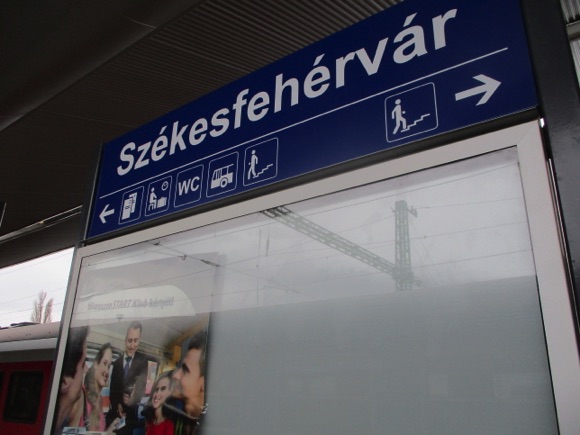Teams, tales and tips – a guide to the local game
The town that sounds like a sneeze, Székesfehérvár was the coronation and burial place for generations of Hungarian royals. In more recent times, the outside world came to know it more as the home of Videoton, the electronic manufacturing company and its football team, recent national champions and the last Hungarian club to reach a European final.
Today they are known as MOL Fehérvár after the acronym for the Hungarian energy giant that backs them and sponsors their new stadium, the MOL Aréna Sóstó. For a while, 2018-19, they played as MOL Vidi, a reference to the diminutive term everyone in Hungary uses for the club.
The main railway junction between the capital, Budapest, and Hungary’s leading leisure destination of Lake Balaton, Székesfehérvár didn’t witness top-flight football until the 1960s, two decades after Videoton had been formed as war-time Vadásztölténygár SK (‘SK Hunting Rifle Cartridge Factory’).




As Vasas, the club gained promotion to the top division in 1967, a year before a sponsorship agreement with Videoton, and the same year that the Sóstói Stadion was built, beside the Salt Lake it was named after south-west of the city centre.
Gaining traction in the 1970s, Videoton enjoyed a purple patch in the mid-1980s. Under Ferenc Kovács, Videoton famously overcame Manchester United on penalties in the UEFA Cup quarter-final of 1985, then beat Real Madrid 1-0 in the away leg of the final – after losing the home one 3-0.
Videoton’s good fortune in recent seasons – winning a first domestic title in 2011 then two more in 2015 and 2018 – owes much to favourable political connections, hence the MOL affiliation. The stadium, opened in 2018, on the same site as its predecessor, the Sóstói Stadion, shares the brand.



In 2007, on the 80th anniversary of the birthdate of Ferenc Puskás, the Videoton-Puskás Akadémia was created, a nursery feeder team for Videoton.
Based in the village of Felcsút, childhood haunt and country home of Hungarian prime minister Viktor Orbán, they have recently developed as a top-flight club with a new stadium, the Pancho Aréna, named after Puskás.
Costing HUF3.8 billion, it opened to much controversy in 2014, its capacity of 3,800 being more than twice the population of Orbán’s village an hour’s drive from Székesfehérvár. Equally controversially, a narrow-gauge rail link was announced in March 2015, to be built at a cost of HUF600 million of EU funds.
On the pitch, the now named Puskás Akadémia have been top flight since 2013. The under-17 team compete in the Puskás Cup in the spring, often against their counterparts from the youth academies of Honvéd, Real Madrid and Panathinaikos, whom the great man graced as a player or manager.



Getting Around
Arriving in town, local transport and timings



The nearest international airport is Budapest, 100km (62 miles away). There is no direct public transport from there to Székesfehérvár.
Once you reach Budapest – see Getting Around, Budapest – take the train from Déli station (Déli pu. on red metro line 2, journey time 50mins, tickets Ft1,500/€4.
In Székesfehérvár, city transport consists of local buses. The stadium is a 10-15min walk from the main rail station, in the opposite direction to the city.
For a cab, call Fehérvár Taxi (+36 22 222 222 or +36 22 343 343).
Where to Drink
The best pubs and bars for football fans







The historic centre is dotted with bars, starting with the arty Patria on focal Városház tér, with its large terrace and chic interior with a TV screen. The nearby Ahoj-Prága also shows sport but Krušovice beer is the main draw.
The Színház Sörpatika down the little sidestreet of Várkapu utca keeps late hours and shows matches. In the same street, the Várkocs Old Pub is more atmospheric, with outdoor seating.
Tucked down Rózsa utca, Ribillió attracts a cool crowd for matches, on a big screen and over the table-football table. Diagonally opposite the Magyar Király Hotel, the Salvator offers great Paulaner beer but little by way of TV sports.
Towards the station on Megyeház utca, friendly Beeráló numbers 16 taps of craft brews, plus a TV screen by the bar. Closer still, the Panama allows you to sink a cheap Hungarian beer before your train or just after you arrive.
Where to stay
The best hotels for the stadium and city centre








Turizmus Székesfehérvár has a database of local hotels.
The nearest hotel to the stadium is the comfortable, 46-room Szárcsa on the main road of the same name, with a pool, sauna and restaurant serving Hungarian specialities. Also close but on the other side of the station, the Jancsár on Balatoni út was converted into a motel in 2019, with singles at €30, doubles €45.
On the city side of the station, the mid-range Platán on Gyümölcs utca now offers a large recreational space while off main Berényi út in town, the Vadaszkürt punches way above its two-star status.
Further up the main road, the Magyar Király graces a 200-year-old mansion, guests granted access to a nearby pool and sauna. Behind, on Ady Endre utca, the Novotel is the city’s main business-friendly lodging.







